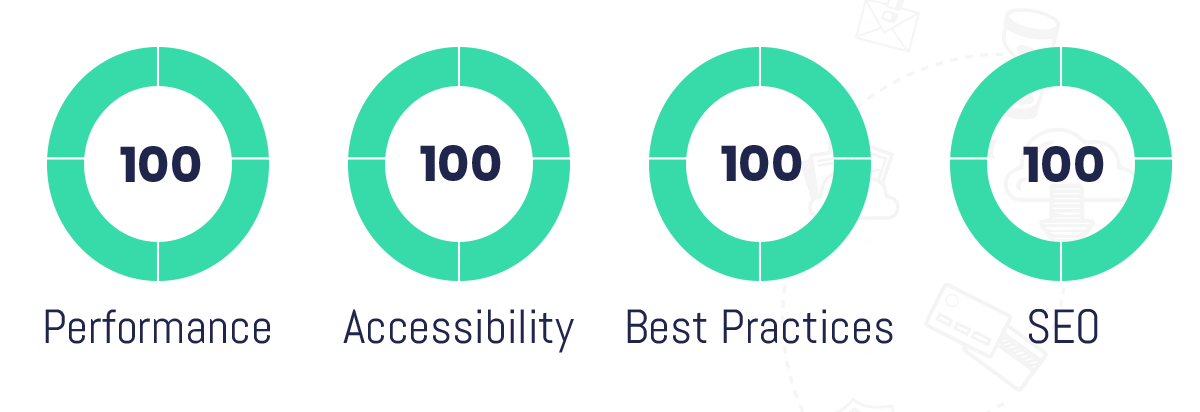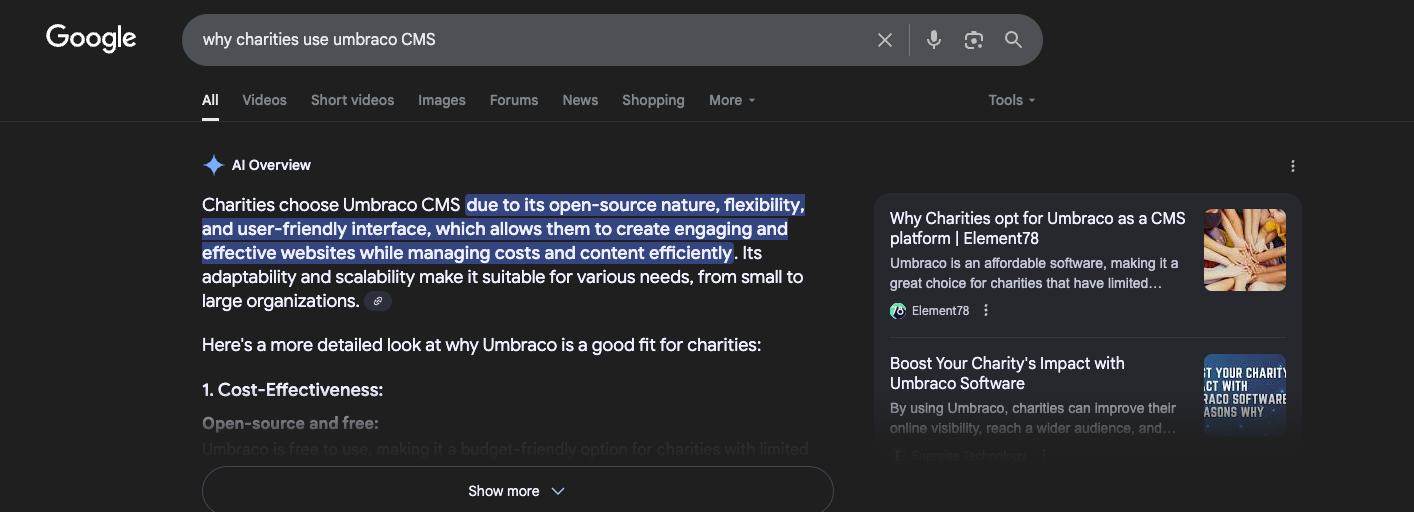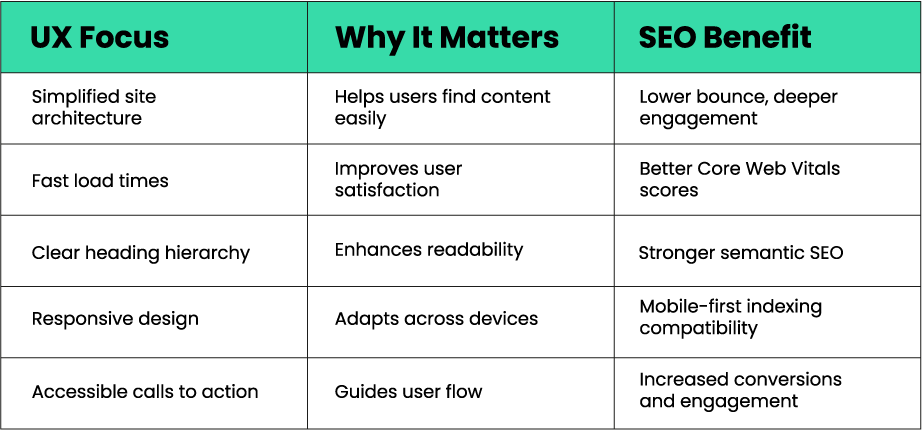Why UX and SEO Are more connected than you think
Ever clicked away from a website because it was confusing, slow to load, or didn’t work well on mobile? Google noticed and your rankings probably took a hit.
UX (user experience) and SEO (Search Engine Optimisation) might seem like separate disciplines, but in practice, they’re deeply intertwined. SEO brings people to your site. UX decides whether they stay, engage, and convert. The better the experience for your users, the better the signals you send to search engines.
Here’s how thoughtful UX directly improves your SEO performance.
1. Clear navigation improves engagement
When people land on your site, they want to find answers, products or services fast. That starts with intuitive menus, logical page structures, and visible calls to action. Avoid overcomplicated menus, hidden links, or overly clever labels. Simple wins.
Good navigation:
- Helps users explore more pages
- Encourages them to stay longer
- Reduces bounce rate
These behaviours send strong quality signals to Google, improving your site’s ability to rank well.
2. Fast load times help you rank higher
According to Google, as page load time increases from one to three seconds, the likelihood of a user bouncing rises by 32%. That’s a big deal, especially on mobile.
Speed not only improves user satisfaction, it’s also a measurable ranking factor through Core Web Vitals. These include loading performance, interactivity, and layout stability.

3. Useful, accessible content builds authority
UX design and content go hand in hand. If your content isn’t structured clearly or accessible to all users, it won’t perform, no matter how good your keywords are.
What great UX content looks like:
- Clear headings (H1, H2, etc.) for easy scanning
- Short paragraphs and bullet points
- Alt text for images and mobile-friendly layouts
This not only improves readability, but it also increases your chances of winning rich results and featured snippets in search.

4. Mobile-first experience matters more than ever
Google now evaluates your website based on its mobile version first. If your mobile UX is lacking, it can affect how your entire site ranks.
Mobile-friendly UX includes:
- Responsive layouts that adapt smoothly to screen size
- Touch-friendly buttons and menus
- Prioritising key content for smaller screens
We always test on real devices — not just by resizing your browser window, if your site has good mobile traffic, its essential you test key user journeys on a mobile device and experience what your users are.
5. UX Signals Are Now SEO Signals
Search engines are getting better at reading human behaviour. Metrics like dwell time, scroll depth, click-through rate, and layout shift now contribute to how your site ranks.
Design choices that improve these signals include:
- Clean layouts with plenty of white space
- Fast, intuitive user journeys
- Fewer distractions on key landing pages
These improvements create trust, with users and with Google.
UX win that boost SEO: A checklist
If you’re not sure where to begin, focus on the areas below for the biggest return.

Real results when UX Meets SEO
UX-first design doesn’t just look good, it performs. Research across the digital space consistently shows its impact on SEO:
- According to a 2023 study by Portent, websites that load in one to two seconds can convert at up to 2.5 times the rate of slower sites.
- In a mobile UX study commissioned by Google in 2021, 79% of users said they were more likely to revisit or share a site that’s easy to use on their phone.
- SEO experts at Moz have long highlighted that clear site architecture and strong internal linking improve crawl efficiency and strengthen page authority, both essential for higher rankings.
At Element78, we’ve seen similar results firsthand. Sites that prioritise UX tend to keep visitors engaged longer, convert more consistently, and earn stronger visibility in search.
Find out more Ready to Elevate Your UX?
We offer UX and SEO audits to uncover your biggest opportunities. Let’s talk about how we can help your site perform better, for people and for search engines.


